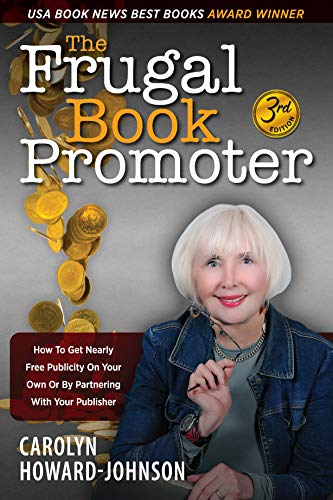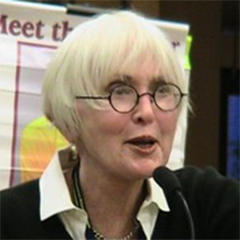Contributed by Children's Author Karen Cioffi
I’ve noticed that people who want to write a story but are new to the arena don’t understand what’s involved in writing a good story.
And I’ve seen lots of drafts that are cute, but they have no story arc or character arc. They’re simply a series of related events or incidents.
Along with these story ideas that don’t have a story arc, a lot of new authors don’t want to make their protagonist real.
A story and its characters should be like a roller coaster, not a carousel.
First, let’s touch on what makes a publishing worthy story.
The very first thing is that your protagonist needs a big problem. It needs to be something that he struggles to overcome.
Here are a couple of examples of a problem that needs to be overcome:
• Maybe Rafael is being bullied at school.
• Maybe Sophia just got a new bike and was told not to leave it alone. She left it unattended at the park and it was stolen.
• Maybe Lisa moved to a new neighborhood and had to start a new school. She’s anxious about all the changes.
After the problem has been established, the main character (MC) must try to figure out how to overcome it.
But as life isn’t smooth, the MC can’t overcome the problem in one attempt.
The protagonist needs to struggle to reach the goal. He needs to try a couple of things, fail, and become deflated before he finally comes up with a plan that leads to success.
Along with the MC succeeding, there must be some growth.
• Maybe he learns he’s not the person he thought he was, like the protagonist, Wang, in my chapter book “Walking Through Walls.”
• Maybe she learns compassion.
• Maybe she learns how to make friends.
The story arc and character arc both have a beginning, middle, and end.
When thinking of a story arc, think of a triangle.
1. The exposition: The introduction is at the bottom of the left side. It introduces the MC and setting.
2. The trigger: The problem appears (the inciting incident). It may be internal or external, but it needs to be addressed.
3. The quest: The MC struggles to overcome the problem. The action is rising, and so is the conflict. On her quest to find a solution, the MC encounters obstacles that must be overcome.
4. The climax: The MC makes a critical choice and engages in his final attempt. He’s chosen his path and it’s the beginning of his change. The action declines as everything unfolds.
5. The resolution: The MC has reached the end of the road. It's now the reward or consequence time. But whichever it is, the MC needs to have grown in some way as a result of the journey. When writing for young children, the journey needs to end with success.
For #4, the climax, think of a kid about to steal for the first time. Will his conscience kick in and stop him, or will he go through with it?
So, you can see that a series of related incidents does not lend itself to a a full story arc.
ABOUT THE AUTHOR
Karen Cioffi is an award-winning children’s author, ghostwriter, rewriter, and coach with clients worldwide. If you need help with your children’s story, please visit Karen Cioffi Writing for Children.
Karen also offers:
HOW TO WRITE A CHILDREN’S FICTION BOOK
A 250+ book that will help you start or finish your children’s book.
WRITERS ON THE MOVE SELF-PUBLISHING SERVICE
Help for children's authors.
-----
A feature in the right column of this blog lets you subscribe to #SharingwithWriters so you don’t miss any of Karen’s posts on writing for children.
-----
MORE ABOUT THE BLOGGER Carolyn Howard-Johnson is the multi award-winning author of fiction, creative nonfiction, and poetry. She is also a marketing consultant, editor, and author of the multi award-winning #HowToDoItFrugally Series (https://www.amazon.com/dp/B0BTXQL27T/ ) of books for writers including "The Frugal Book Promoter" (https://bit.ly/FrugalBookPromoIII), and "The Frugal Editor" both offered in their third editions by Modern History Press. Others in that series are "How to Get Great Book Reviews Frugally and Ethically," and two booklets, both in their second editions also from Modern History Press. The booklets, "Great Little Last Minute Editing Tips for Writers" (https://bit.ly/LastMinuteEditsII) and "Great First Impression Book Proposals" (https://bit.ly/BookProposalsII) are career boosters in mini doses and both make ideal thank you gifts for authors. The one on writing book proposals is also available as an Audio Book. "The Frugal Editor "(https://tinyurl.com/TheFrugalEditor), was recently released in its third edition. It is the winningest book in this series for writers. Carolyn also has three frugal books for retailers including one she encourages authors to read because it helps them understand what is needed to convince retailers to host their workshops, presentations, and signings. It is "A Retailer’s Guide to Frugal In-Store Promotions: How To Increase Profits and Spit in the Eyes of Economic Downturns with Thrifty Events and Sales Techniques" (https://bit.ly/RetailersGuide). In addition to this blog, Carolyn helps writers extend the exposure of their favorite reviews at https://TheNewBookReview.blogspot.com. She also blogs all things editing--grammar, formatting and more--at "The Frugal, Smart, and Tuned-In Editor" (https://TheFrugalEditor.blogspot.com). Learn more and follow it to get news on her new releases directly from Amazon at https://bit.ly/CarolynsAmznProfile.







